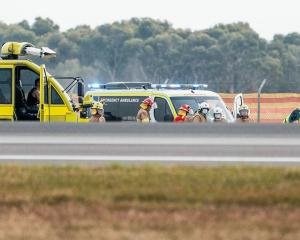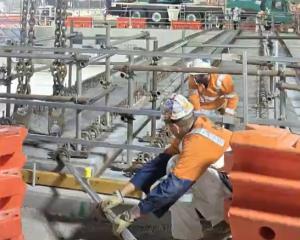The worst flooding in more than 50 years in a sodden Australian region may take weeks to clear after it was lashed by record rainfall.
However, recovery plans are already in place amid concerns for western Queensland's graziers who are expected to lose a staggering number of livestock.
Floodwaters have cut roads and isolated central and southwest communities after days of rain, forcing many to flee including an entire town.
The population of Adavale - a southwest community of about 30 people - was flown out by helicopter to nearby Quilpie after being inundated.
Central Queensland's Stonehenge, Jundah and Windorah have also been hit hard after some areas recorded up to 600mm, nearly double the yearly average annual rainfall.
It triggered flooding not seen since 1974, ensuring a long wait for water to recede for some.
But Queensland Premier David Crisafulli has already turned his attention to the aftermath.
Personal hardship assistance has been activated along with concessional loans and freight subsidies to help primary producers in a string of western Queensland communities.
"We do have a crisis when it comes to the impact of agriculture in a large part of our state," Mr Crisafulli told reporters in Quilpie.
"You are dealing with many, many hundreds of thousands of acres of country that will be inundated.
"You've got somewhere in the order of a million head of cattle, a million sheep who are impacted at the moment and we could see stock losses into the hundreds of thousands."
The premier said the disaster would test some communities.
"Agriculture underpins these communities, and they are going to need help," he said.
"In the short term, we have to get fodder to try, wherever humanly possible, to keep stock alive.
"In the longer term, we have to make sure that we can help these communities rebuild."
Floodwaters have destroyed thousands of kilometres of livestock fencing.
"My message to these communities are, you are small in number, but you're big in what you do for our state economically," Mr Crisafulli said.
"We are better as a state because of these proud western communities, and we will be here to see it through."
Rain began to ease in the southwest on Friday as heavy falls moved into northern New South Wales.
The wet weather will shift again on Saturday, with rain and storms streaming down the coast affecting Queensland's southeast as well as Sydney, Wollongong and Newcastle in NSW.
Strong winds and rain are forecast on Sunday across parts of southern NSW and eastern Victoria, with the south coast set to receive up to 75mm of rain plus dangerous waves.
"This situation is continuing to develop moving from the flooding risk in Queensland to a more localised risk of wind, large waves and rain through parts of the far southeast," the Bureau of Meteorology's Miriam Bradbury said.












